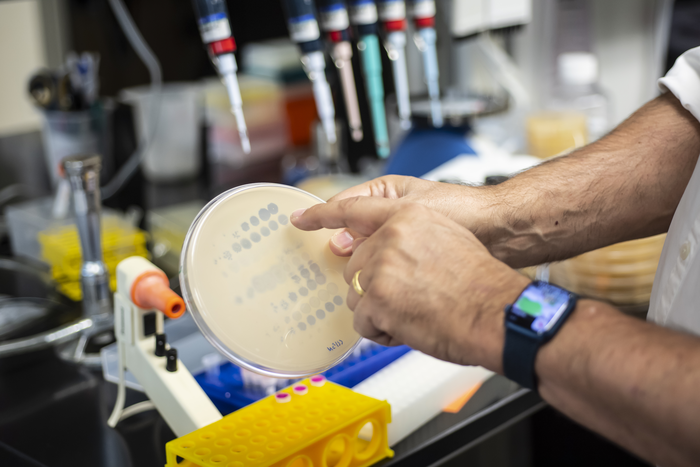A research team led by scientists from the University of Pittsburgh and the University of California San Diego reported 20 new case studies on the use of phage therapy, showing success in more than half of the patients. It is reportedly the largest ever set of published case studies for therapy using bacteriophages, providing detail on their use to treat infections while laying the groundwork for a future clinical trial.
“Some of those are spectacular outcomes, and others are complicated,” said Graham Hatfull, PhD, the Eberly Family Professor of Biotechnology in the Kenneth P. Dietrich School of Arts and Sciences at the University of Pittsburgh. “But when we do 20 cases, it becomes much more compelling that the phages are contributing to favorable outcomes—and in patients who have no other alternatives.”
The team published its paper “Phage Therapy of Mycobacterium Infections: Compassionate-use of Phages in Twenty Patients with Drug-Resistant Mycobacterial Disease” in Clinical Infectious Diseases.
“Non-tuberculous Mycobacterium (NTM) infections, particularly Mycobacterium abscessus, are increasingly common among patients with cystic fibrosis and chronic bronchiectatic lung diseases. Treatment is challenging due to intrinsic antibiotic resistance. Bacteriophage therapy represents a potentially novel approach. Relatively few active lytic phages are available and there is great variation in phage susceptibilities among M. abscessus isolates, requiring personalized phage identification,” write the investigators.
“Mycobacterium isolates from 200 culture-positive patients with symptomatic disease were screened for phage susceptibilities. One or more lytic phages were identified for 55 isolates. Phages were administered intravenously, by aerosolization, or both to 20 patients on a compassionate use basis and patients were monitored for adverse reactions, clinical and microbiologic responses, the emergence of phage resistance, and phage neutralization in serum, sputum, or bronchoalveolar lavage fluid.
“No adverse reactions attributed to therapy were seen in any patient regardless of the pathogen, phages administered, or the route of delivery. Favorable clinical or microbiological responses were observed in 11 patients. Neutralizing antibodies were identified in serum after initiation of phage delivery intravenously in eight patients, potentially contributing to lack of treatment response in four cases but were not consistently associated with unfavorable responses in others. Eleven patients were treated with only a single phage, and no phage resistance was observed in any of these.
“Phage treatment of Mycobacterium infections is challenging due to the limited repertoire of therapeutically useful phages, but favorable clinical outcomes in patients lacking any other treatment options support continued development of adjunctive phage therapy for some mycobacterial infections.”

Each patient treated in the study was infected with one or more strains of Mycobacterium, a group of bacteria that can cause deadly, treatment-resistant infections in those with compromised immune systems or with cystic fibrosis. In 2019, Hatfull led a team showing the first successful use of phages to treat one of these infections.
“For clinicians, these are really a nightmare: They’re not as common as some other types of infections, but they’re among some of the most difficult to treat with antibiotics,” explained Hatfull. “And especially when you take these antibiotics over extended periods of time, they’re toxic or not very well-tolerated.”
Last month, the University of Pittsburgh researchers were involved in two new case studies successfully treating patients in collaboration with colleagues at National Jewish Health and Harvard University. This newest paper involved collaborators from 20 institutions.
“These are incredibly brave physicians, jumping off the ledge to do an experimental therapy to try to help patients who have no other options,” said Hatfull. “And each of these collaborations represents a marker that can move the field forward.”
Looking at measures of patient health and whether samples from the patient still showed signs of Mycobacterium infections, the team found that the therapy was successful in 11 out of 20 cases. No patients showed any adverse reactions to the treatment.
In another five patients the results of the therapy were inconclusive, and four patients showed no improvement. According to Hatfull, even these apparent failures are key to making the therapy available to more patients. “In some ways, those are the most interesting cases,” he said. “Understanding why they didn’t work is going to be important.”
Unexpected patterns
Several unexpected patterns emerged from the case studies. In 11 cases, researchers were unable to find more than one kind of phage that could kill the patient’s infection, even though standard practice would be to inject a cocktail of different viruses so the bacteria would be less likely to evolve resistance.
“If you’d asked me whether that was a good idea three years ago, I would have had a fit,” continued Hatfull. “But we just didn’t observe resistance, and we didn’t see a failure of treatment from resistance even when using only a single phage.”
In addition, the team saw that some patients’ immune systems attacked the viruses, but only in a few cases did their immune systems render the virus ineffective. And in some instances, the treatment was still successful despite such an immune reaction. The study paints an encouraging picture for the therapy, according to Hatfull, and one that opens the possibility for new phage regimens that clinicians could use to maximize the treatment’s chance of success.
Along with the study’s significance to patients facing Mycobacterium infections, it also represents a substantial advance for the wider field of phage therapy, pointed out Hatfull, adding that a concern in some corners is that researchers may be only publishing case studies in which phage therapy is successful.
“A series of consecutive case studies, where we’re not cherry-picking, is a much more transparent way of looking to see what works and what doesn’t,” said Hatfull. “This adds considerable weight to the sense that the therapy is safe.
“We’ve not yet figured out how to find or engineer phages that will get every strain of bacteria in these patients. That represents one of the major challenges ahead.”


